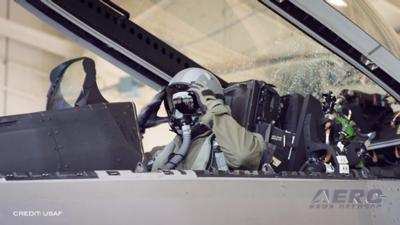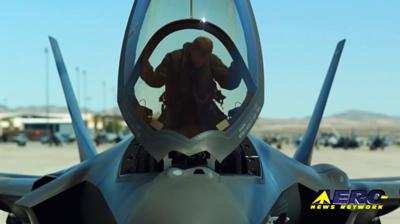Fri, Sep 24, 2021
New Guidelines Have Been Established In Support Of Rated Diversity

Several Air Education and Training Command initiatives to remove barriers for qualified candidates after the Air Force completed their six-month assessment of their Initial Racial Disparity Report. These changes came after extensive research conducted by the pilot selection process, by a group responsible for identifying potential barriers to entry.
“Our studies concluded that these changes will result in more qualified candidates of underrepresented groups being selected for training,” said Lt. Col. Brandi King, the working group’s AETC lead.
The second-largest component of an applicant’s PCSM score is prior flying experience. In consideration of candidates facing socioeconomic barriers or lack of access to the financial means to access flying lessons, the Air Force now will only consider a candidate's initial 60 flight hours when processing scores.
According to the Air Force, pilot candidates may now:
- Use their highest composite scores from any Air Force Officer Qualifying Test (AFOQT) rather than the most current score.
- Complete the Test of Basic Aviation Skills (TBAS) up to three times, with the third requiring a waiver from the applicant’s wing commander or equivalent.
- Re-take the AFOQT and TBAS after 90 days compared to the previous 150-day requirement for the AFOQT and 180 days for the TBAS.
- Participate in study sessions with other individuals who have not yet taken the test if the examinee has also never taken the AFOQT.

“There is no evidence that more than 61 hours of flight experience poses a significant benefit to pilot training success,” said Dr. Katie Gunther, chief of strategic research and assessment at the Air Force Personnel Center. “The probability of success in flight training increases substantially from 0 hours to 60 hours, then relatively plateaus.”
“Flying lessons are expensive and could potentially exclude qualified candidates from becoming pilots in the Air Force due to limited income or lack of opportunities,” said Brig. Gen. Brenda Cartier, AETC’s Director of Operations and Communications and the pilot selection process working group’s overall lead. “In order to ensure we do not eliminate otherwise qualified candidates, flight programs have been implemented at both the United States Air Force Academy and the Air Force Reserve Officer Training Corps. Cadets receive free ground and flight training, and an opportunity to gain critical skills and directly improve their competitiveness for pilot selection boards.”
More News
According To The Witness, Once The Airplane Landed, It Continued To Roll In A Relatively Straight Line Until It Impacted A Tree In His Front Yard On November 4, 2025, about 12:45 e>[...]
"In the frame-by-frame photos from the surveillance video, the left engine can be seen rotating upward from the wing, and as it detaches from the wing, a fire ignites that engulfs >[...]
Radar Required A term displayed on charts and approach plates and included in FDC NOTAMs to alert pilots that segments of either an instrument approach procedure or a route are not>[...]
From 2023 (YouTube Edition): It’s a Small World After All… Founded in 2011 by pilot, aircraft designer and builder, and U.S. Air Force veteran Sam Watrous, Uncasville,>[...]
Also: UFC Buys Tecnams, Emirates B777-9 Buy, Allegiant Pickets, F-22 And MQ-20 The NTSB's preliminary report on the UPS Flight 2976 crash has focused on the left engine pylon's sep>[...]
 NTSB Prelim: Funk B85C
NTSB Prelim: Funk B85C Aero-News: Quote of the Day (11.21.25)
Aero-News: Quote of the Day (11.21.25) ANN's Daily Aero-Term (11.21.25): Radar Required
ANN's Daily Aero-Term (11.21.25): Radar Required Classic Aero-TV: ScaleBirds Seeks P-36 Replica Beta Builders
Classic Aero-TV: ScaleBirds Seeks P-36 Replica Beta Builders Airborne 11.21.25: NTSB on UPS Accident, Shutdown Protections, Enstrom Update
Airborne 11.21.25: NTSB on UPS Accident, Shutdown Protections, Enstrom Update




